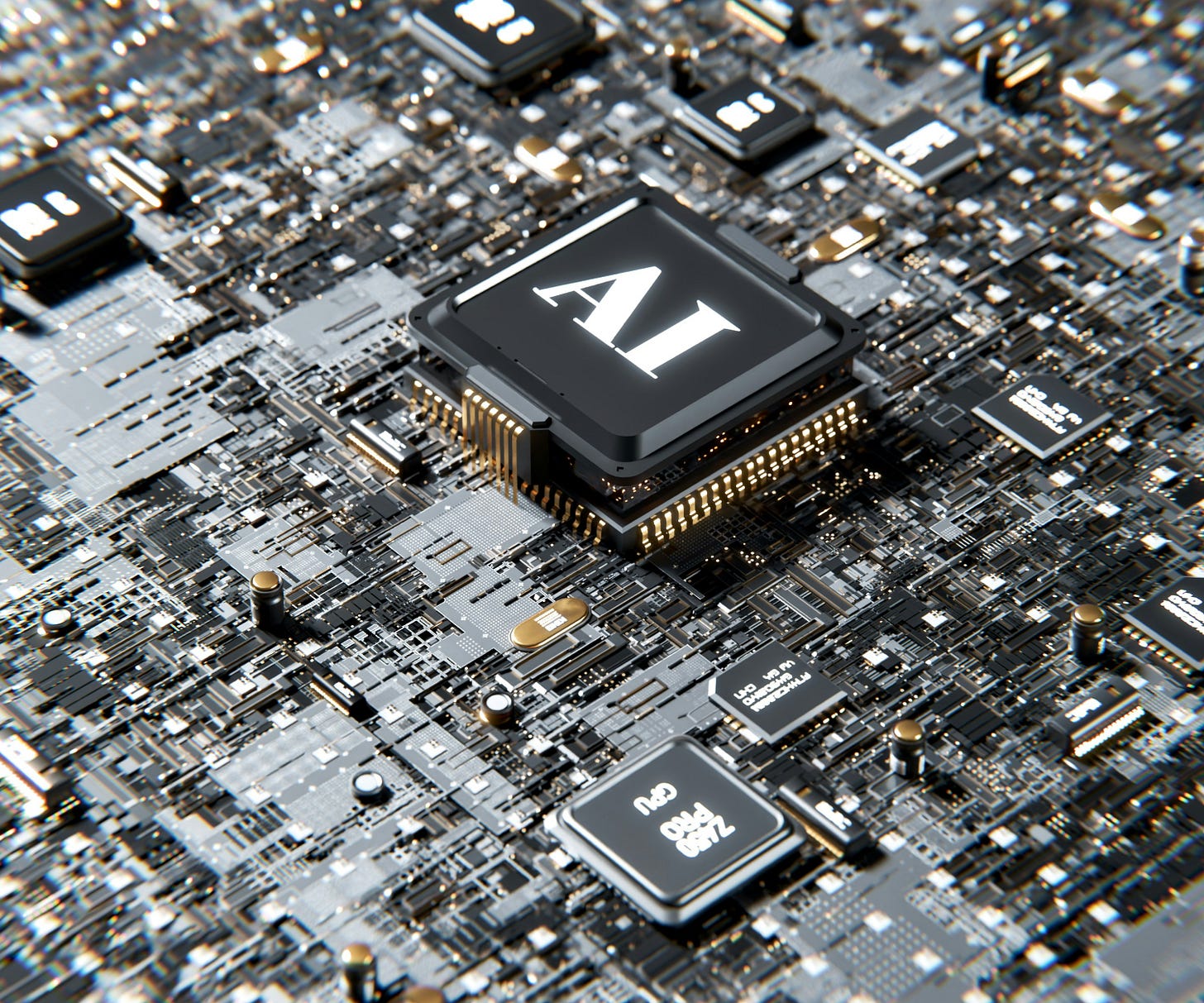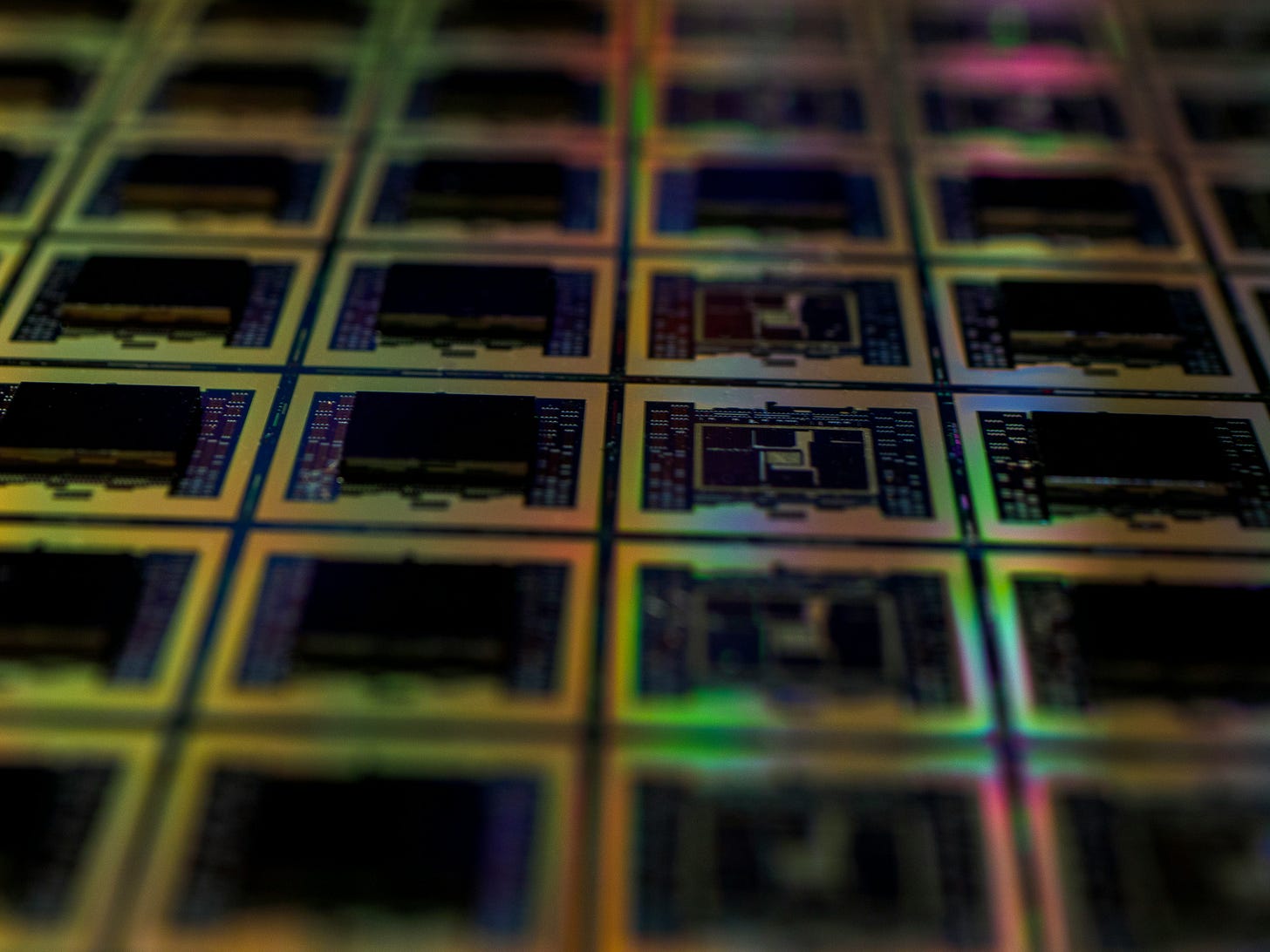2025 Semiconductor Trends: A Venture Capital Perspective
by Ion Hauer, Principal at APEX Ventures
Speaking at the Applied Deep Tech Fest event in Germany recently provided me with an opportunity to share my perspective on where semiconductor investment opportunities are heading—observations drawn from our work at APEX Ventures, backing Europe's most promising deep tech founders.
Every transformative moment in technology history has been underpinned by a fundamental shift in semiconductor capabilities—and we're witnessing another such inflection point today. Here's my analysis of what 2025 holds for semiconductor investment.
Key market drivers
Artificial intelligence adoption has progressed beyond niche applications and is now deeply integrated across major industries, including healthcare, automotive, and logistics. Predictions show that the AI in the healthcare market will reach $187.9 billion by 2030, growing at a CAGR of 38.7%. This widespread adoption demands advanced chips capable of handling increasingly complex computations at scale.
Simultaneously, the world is experiencing an unprecedented explosion of data generation. The number of connected IoT devices is projected to reach 30.9 billion by the end of this year. The sheer volume of data being produced requires faster and more efficient processing capabilities, pushing semiconductor design to new frontiers.
Additionally, there is a growing demand for personalized experiences and customized solutions, which necessitates chips tailored for specific use cases with optimized performance. Studies show that 80% of consumers are more likely to do business with a company that offers personalized experiences.
Perhaps most critically, sustainability has emerged as a pressing concern. Data centers consume an estimated 1-3% of global electricity consumption, and the International Energy Agency (IEA) predicts that the consumption will double by 2030. Energy efficiency in computing is now a significant bottleneck, as scaled operations strain power resources and environmental limits. These drivers are not merely shaping market demand; they are redefining the possibilities for innovation in semiconductor technology.
Three emerging trends will determine which companies and investors capture value in this evolving landscape:
1. AI accelerator chips
Photo by Igor Omilaev on Unsplash
AI accelerator chips are the sector's most compelling near-term opportunity. The convergence of three technical breakthroughs is creating sustainable competitive advantages: ultra-low power consumption, enabling deployment at a massive scale; edge processing capabilities that eliminate cloud dependency, allowing data to be analyzed closer to its source, such as on IoT devices or autonomous vehicles; and sophisticated compiler optimization that maximizes hardware efficiency.
Emerging companies like GEMESYS are integrating these advancements to create robust, AI-ready hardware ecosystems that support industries ranging from smart cities to industrial automation. These developments are empowering businesses to deploy AI at an unprecedented scale, unlocking new possibilities for innovation.
2. Power electronics
Photo by Taylor Vick on Unsplash
Power electronics represent the critical infrastructure bottleneck that will determine which AI applications scale successfully.
GPU clusters, which are crucial for AI and machine learning workloads, require more efficient power delivery to support their increasing computational demands. Data centers are addressing this challenge by enhancing rack efficiency and refining designs to optimize performance while minimizing energy consumption. New semiconductor topologies are emerging to meet the unique requirements of power-intensive applications, offering innovative architectures that enhance performance.
Technologies like Skycore are pushing the boundaries of power efficiency, enabling more sustainable computing infrastructures that can support the computational backbone of modern AI and cloud systems.
This trend is critical for ensuring that the semiconductor industry can keep pace with the energy demands of next-generation technologies.
3. Computing on encrypted data
Photo by Markus Spiske on Unsplash
Computing on encrypted data represents one of the most strategically significant privacy breakthroughs in decades. Fully Homomorphic Encryption (FHE) is transitioning from academic curiosity to commercial reality, allowing computations to be performed on encrypted data without the need for decryption, preserving privacy in sensitive applications. Hardware accelerators are being developed to make FHE practical for real-world use, enabling faster and more secure processing.
Innovators like Belfort demonstrate this trend's maturation and enhance the performance of encrypted computing, while advanced software libraries are simplifying the integration of these capabilities into existing systems.
This trend is poised to revolutionize industries such as finance, healthcare, and government, where data security is paramount. By enabling secure computation without compromising performance, these advancements are opening new frontiers for data-driven innovation.
Looking ahead
Photo by Maxence Pira on Unsplash
Looking ahead to 2025, the semiconductor sector presents both unprecedented opportunity and structural constraints that will define investment returns. Here are my predictions how the industry landscape will shape.
AI: TSMC's revenue from AI accelerators will double from $13 billion in 2024, underscoring the fundamental shift toward AI-optimised hardware as these chips now represent 15% of TSMC's $90 billion revenue base.
Quantum: We will witness a gate-based quantum system exceeding 2,000 qubits for the first time, which is a significant step from the current record of 1,180 qubits held by Atom Computing.
Cybersecurity: The global cybersecurity market will reach $200 billion, up from $155 billion in 2024, driven by escalating threats including deepfakes (search interest up 364% in five years).
Investments: Global venture capital investment in semiconductors will surpass 2024's $10.34 billion, reflecting sustained investor confidence despite broader market uncertainties.
Exits: The stock market will witness a semiconductor IPO valued above $10 billion by year-end, with companies like Cerebras Systems representing the AI-optimised solutions capable of achieving this milestone.
However, Europe faces a significant hurdle. I project that we will experience the most severe talent shortage globally in meeting its ambitious semiconductor goals. This shortage highlights the need for strategic investments in education, training, and workforce development to ensure the region can remain competitive in this critical industry.
The semiconductor industry is at the heart of the technological revolution, driven by the convergence of artificial intelligence, data growth, personalization, and sustainability.
At APEX Ventures, we are excited to support innovative companies that are addressing these challenges through advancements in AI accelerator chips, power electronics, encrypted computing, and other groundbreaking technologies.
The path forward is both promising and complex, offering tremendous opportunities for those who can navigate the dynamic landscape of this industry.
📩 For those interested in exploring the future of deep tech and venture capital, I invite you to connect with us. Together, we can shape the future of technology and drive meaningful impact.
Ion Hauer is a Principal at APEX Ventures, a European early-stage deep tech venture capital investor dedicated to supporting transformative technologies.







